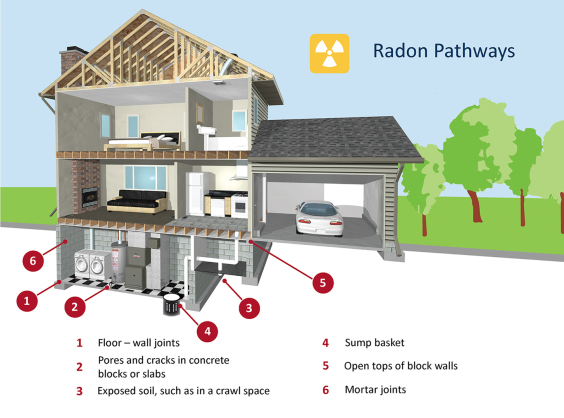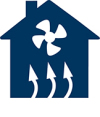Scheduling 1-651-489-4633
The following map shows radon tests performed by Minnesota Home Inspectors LLC from 2011 through 2018.
- Green: Radon levels under 4.0 pc/l
- Yellow: Radon levels over 4.0 pc/l and under 10.0 pc/l
- Red: Radon levels over 10.0 pc/l
If Map Doesn't Load or To View Full Screen Please Click Here
Radon health risks
It is the number one cause of lung cancer for non-smokers and the second leading cause of lung cancer in smokers. Your risk for lung cancer increases with higher levels of radon and longer periods of exposure. If you smoke, the combined risk of smoking and radon exposure is higher. Reducing smoking and radon exposure greatly reduces the lung cancer risk.
Lifetime Risk of Lung Cancer Death from Radon Exposure (per 1,000 people)
* EPA Action Level. For the U.S. general population who are exposed to 4 pCi/L
over a lifetime, it is estimated that 23 out of 1,000 people will die from lung cancer due to the radon exposure.
How radon enters the home
Radon levels are very low outdoors, but can accumulate to high concentrations in the home. This depends on radon levels in the soil, pathways for radon to enter the home, and the driving force. Air pressure differences between outside air and the inside air act to drive radon into the home. Some homes pull more radon into the home than others due to greater pressure differences available pathways.
- Source - High levels of radon are naturally found in Minnesota soils.
- Pathways - Routes the gas takes to enter the home, usually through openings between the soil and the home. These may include cracks in the concrete slab, floor-wall joints, an open sump pit or untreated crawl space, etc.
- Air pressure - Differences in air pressure between the home's interior and the soil can pull radon gas into the home through the pathway
Air pressure
Homes commonly operate at a lower (negative) pressure compared to the outside air. This pressure difference creates a vacuum and outside air can be pulled into the home through openings like doors and windows. Some of this replacement air comes from the soil. There are three main components contributing to air pressure changes in the home that can bring in radon gas.
Foundations
Any home can have a radon problem, no matter the type of foundation.
Scheduling 1-651-489-4633











